Interview with Katie Whittemore
We’re starting out this month’s focus on Spanish literature with a look at a couple Castilian authors, especially Sara Mesa, whose works Open Letter will be publishing in 2020. Because I’m a bit impatient, I thought I’d introduce her to you now, via a sample of Four by Four (available on 1/9), a short piece on her novel Scar, and an interview with Katie Whittemore, who introduced me to Mesa’s work. As you’ll see below, Katie is an emerging translator working with a number of contemporary Spanish female writers—all of whom are quite interesting.
Chad W. Post: Tell us a bit about yourself. How did you get into literary translation?
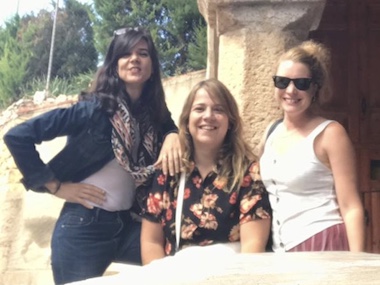
Lara Moreno, Aroa Moreno Durán, and Katie Whittemore
Katie Whittemore: Well, I’ve been interested in literary translation for about ten years, but have been trying to start in earnest for almost exactly a year. I’ve always been a reader and studied literature both as an undergrad and then as an M.Phil student in Latin American Studies. Back then I expected that I would continue on a doctoral track and study comparative lit with a focus on Latin America, but I decided to first commit to really acquiring Spanish fluency. I did the MA in Spanish program at Middlebury (their summer language school in VT and then the academic year in Madrid) during which time I took a few translation courses—general, legal/political/business/etc. In the “general” translation course we were given different samples of literature to translate, just paragraphs: the opening sections of Te trataré como una reina by Rosa Montero and the short story “Paseo del Wagram” by Juan García Hortelano. I LOVED it. I found it really fun, combining reading deeply and carefully and playing with language. Finding solutions and solving problems. It feels a bit like a game, really. I enjoyed the process and got a lot of creative satisfaction from it, but didn’t consider translating literature as a career option at the time.
But, ten years and a few jobs and two kids later, I was still admitting when pressed that “translating books” would be my dream job, but dismissing it as silly, or unrealistic. Until one day I was like, “Well, wait, someone does this. I am going to try.” I applied to the Bread Loaf Literary Translators Conference for June 2018, and started working on some stories that winter. Yes, so last year.
CWP: It as at Translation Bread Loaf (which I’ll always refer to as TranslationLoaf) where we met and where you presented a short story by Sara Mesa that you’d been working on. What drew you to her work? And, on a separate note, what did you think of TranslationLoaf?
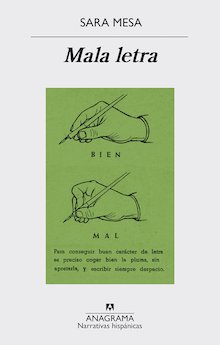 KW: I started Mesa’s collection of short stories Mala letra (Anagrama 2016) when I decided to dedicate myself to reading more contemporary works in Spanish, with the intention of finding a few writers who I liked and who hadn’t been widely translated in English. Sara’s stories are so compelling. Her work can be really disconcerting, suggestive, elliptical, but I found her use of language to be clear and sharp, and accessible from a style perspective, which is fun to read and translate. In that collection, I’m really drawn to her depiction of childhood and adolescence as sites of both oppression and transgression, particularly for girls and young women. She captures that period in life so poignantly, but in a way but that’s raw, painful, often (usually, ok maybe always) uncomfortable or dark.
KW: I started Mesa’s collection of short stories Mala letra (Anagrama 2016) when I decided to dedicate myself to reading more contemporary works in Spanish, with the intention of finding a few writers who I liked and who hadn’t been widely translated in English. Sara’s stories are so compelling. Her work can be really disconcerting, suggestive, elliptical, but I found her use of language to be clear and sharp, and accessible from a style perspective, which is fun to read and translate. In that collection, I’m really drawn to her depiction of childhood and adolescence as sites of both oppression and transgression, particularly for girls and young women. She captures that period in life so poignantly, but in a way but that’s raw, painful, often (usually, ok maybe always) uncomfortable or dark.
And Bread Loaf—I loved it. It was a great experience. The setting is so idyllic and beautiful. It’s like being on vacation. But aside from the R&R element, I learned so much. I had the privilege of working with Sora Kim-Russell in workshop, and she was wonderful—insightful comments, calm presence, letting the participants guide a lot of what we highlighted or discussed. The critiques of other translators, not just on my piece, but everyone’s, were so valuable. We went over my translation on the last day, but after each workshop I was already revising, based on the comments people had made about other translations. It really helped to see my own work differently. Very productive. Of course—and this is invaluable for someone totally new to the translation/lit/publishing scene—we had the chance to meet editors and publishers from literary magazines and publishers interested in translation and hear from them, ask questions, get advice, as well as try to work in a bit of your own stuff. So yes, applications for the 2019 Bread Loaf Literary Translators’ Workshop are open and rolling until February 15th!
CWP: Sticking with Mesa for a minute–you’re currently working on Four by Four for Open Letter (we’ll run an excerpt next week). How would you describe this book?
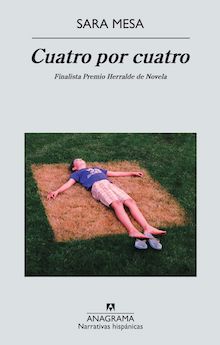 KW: Four by Four is Mesa’s second novel. It was published in 2012 (Anagrama), and it was a finalist for the Herralde Prize. The novel has three sections, each written in a distinct narrative voice and style.
KW: Four by Four is Mesa’s second novel. It was published in 2012 (Anagrama), and it was a finalist for the Herralde Prize. The novel has three sections, each written in a distinct narrative voice and style.
The first part introduces us to Wybrany College, an isolated Spanish boarding school cut off from an increasingly chaotic, violent world. I guess it’s sort of speculative in this way, in that the world is in decline, becoming unlivable, and this school is supposed to be a refuge for the country’s elites, and the “Specials,” or scholarship students that are taken in from the city. Something is definitely not right at this place—there’s a lot of suggestion, insinuation, unease. The sections are short and fragmented and alternate between the voice a fifteen year-old female scholarship student, and a third-person narrator. In Part Two, the narration takes the form of 56 diary entries of a newly arrived substitute taking the place of a teacher who has gone missing, García Medrano. The epilogue is made up of the García Medrano’s personal papers that depict life in the “City” and also reveal the nefarious mystery of what’s really happening at the school. The book explores power and oppression, sex, the individual vs. the system. Good stuff.
CWP: I’m pretty sure that based on that description, everyone’s going to get exactly why I’ve been so excited about this book. (And why it reminds me a bit of Rodoreda.) What about her other works? We’re doing Cara de Pan as well (in Megan McDowell’s translation), but is there anything you have to say about how she’s developed as a writer over the course of her career? Or themes that she’s concerned with?
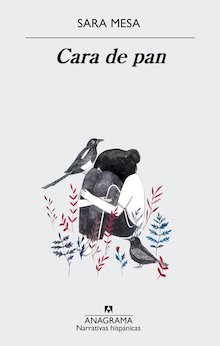 KW: Mesa’s first novel, Un encendio invisible/An Invisible Fire can be read with Four by Four as a sort of precursor or companion piece. They take place in the same “world” and to me read as more allegorical, more dystopian—there’s a shift to more realistic, intimate storytelling in Scar, the stories in Mala letra, and Cara de pan. But in all her work, there’s a common thematic concern (obsession?) with power and its forms and manifestations. In the first two novels, it seems that “the system” is the primary focus of her interrogation and criticism, and the characters serve that end. But in her stories and Scar and Cara de pan, she’s exploring the dynamics of power (and freedom, imposition, constraint, pain, rebellion) within close relationships and in the individual’s relationship to society, on a smaller, more personal scale. Regular people, strange people, imperfect lives.
KW: Mesa’s first novel, Un encendio invisible/An Invisible Fire can be read with Four by Four as a sort of precursor or companion piece. They take place in the same “world” and to me read as more allegorical, more dystopian—there’s a shift to more realistic, intimate storytelling in Scar, the stories in Mala letra, and Cara de pan. But in all her work, there’s a common thematic concern (obsession?) with power and its forms and manifestations. In the first two novels, it seems that “the system” is the primary focus of her interrogation and criticism, and the characters serve that end. But in her stories and Scar and Cara de pan, she’s exploring the dynamics of power (and freedom, imposition, constraint, pain, rebellion) within close relationships and in the individual’s relationship to society, on a smaller, more personal scale. Regular people, strange people, imperfect lives.
 As for how she’s developing as a writer: I’m not a literary critic or a Mesa scholar so I hesitate to draw conclusions, but as a close reader I can say that I see an evolution or maturity in her writing that has allowed her to treat her characters and their circumstances with more compassion. These are still people who are often messed-up, different, and in some cases unlikable or discomfiting. I don’t know how to put it other than to say that she seems to be treating her characters with more tenderness, more nuance. I think this starts to become apparent in Scar, especially at the end, and is absolutely present in her treatment of the friendship/relationship between the 13-year-old Casi and the 54-year-old Viejo in Cara de pan.
As for how she’s developing as a writer: I’m not a literary critic or a Mesa scholar so I hesitate to draw conclusions, but as a close reader I can say that I see an evolution or maturity in her writing that has allowed her to treat her characters and their circumstances with more compassion. These are still people who are often messed-up, different, and in some cases unlikable or discomfiting. I don’t know how to put it other than to say that she seems to be treating her characters with more tenderness, more nuance. I think this starts to become apparent in Scar, especially at the end, and is absolutely present in her treatment of the friendship/relationship between the 13-year-old Casi and the 54-year-old Viejo in Cara de pan.
CWP: In addition to Roberto Bolaño (who you’ve written a thesis on, right?), which other Spanish-language authors are you into?
 KW: I worked on Bolaño twelve years ago now when I wrote a master’s thesis on 2666 and Amulet. It was really exciting to dive into his work at that time. I don’t know when the English translations started coming out, but then I was just reading him in Spanish, and like so many, was really into him. I’d actually like to re-read 2666 this year. Back then—this was 2006—I was reading mostly contemporary Latin American writers, and mostly men: Bolaño, Rodrigo Fresán, Rodrigo Rey Rosa, from Guatemala, who I loved, Horacio Castellaños Moya, Juan Gabriel Vázquez, Edmundo Paz Soldán, etc. Of course, they have all been translated now, but at the time, translation wasn’t on my radar. I lived for a couple of years in Spain after that, and married a Spaniard (we live here now, in Valencia), so my focus has shifted to writers in Spain, and right now I’m particularly interested in reading women, honestly. I love Mesa’s work, and I’m also into the novels and short stories by Lara Moreno, Pilar Adón, Nuria Labari (who has a new novel in Spanish coming out soon) and Aroa Moreno Durán, whose first novel La hija del comunista won last year’s Ojo Crítico prize, which Mesa won in 2015 for Scar (published in English by Dalkey).
KW: I worked on Bolaño twelve years ago now when I wrote a master’s thesis on 2666 and Amulet. It was really exciting to dive into his work at that time. I don’t know when the English translations started coming out, but then I was just reading him in Spanish, and like so many, was really into him. I’d actually like to re-read 2666 this year. Back then—this was 2006—I was reading mostly contemporary Latin American writers, and mostly men: Bolaño, Rodrigo Fresán, Rodrigo Rey Rosa, from Guatemala, who I loved, Horacio Castellaños Moya, Juan Gabriel Vázquez, Edmundo Paz Soldán, etc. Of course, they have all been translated now, but at the time, translation wasn’t on my radar. I lived for a couple of years in Spain after that, and married a Spaniard (we live here now, in Valencia), so my focus has shifted to writers in Spain, and right now I’m particularly interested in reading women, honestly. I love Mesa’s work, and I’m also into the novels and short stories by Lara Moreno, Pilar Adón, Nuria Labari (who has a new novel in Spanish coming out soon) and Aroa Moreno Durán, whose first novel La hija del comunista won last year’s Ojo Crítico prize, which Mesa won in 2015 for Scar (published in English by Dalkey).
CWP: So jealous that you live in Valencia. I visited last year and absolutely fell in love with the city. But rather than talk about Valencia CF’s disappointing season, I’ll try and keep us on topic: Are there any trends in contemporary Spanish literature that you’ve noticed?
 KW: Hmm. I can talk a little about one of the novels I’ve done a sample of. Lara Moreno’s Por si se va la luz/In Case We Lose Power is considered an example of what Spanish critics have termed “neoruralism,” a trend in contemporary Spanish literature that—speaking very broadly—is concerned with a rural or “natural” setting and how the characters interact with and within that space. In the case of Moreno’s novel, “lo rural” provides a context in which the characters can choose to abandon the decadence of the contemporary urban world in search of something essential. Lara’s book came out the same year (2013) as Jesús Carrasco’s Intemperie, which is probably the best known example of this trend (and was translated by Margaret Jull Costa and published as Out in the Open by Riverhead). A few other authors whose work has been associated with neoruralism would be Pilar Adón, Iván Repila, Manuel Astur. And others. Also really interesting is Sergio del Molino’s narrative essay/non-fiction book called La España vacía which explores, among other things, cultural issues and questions related to rural Spain and its “emptying”: the depopulation of rural areas that was, and continues to be, a population trend in Spain that also had social and artistic implications. At the same time, you have these young writers who are concerned with a return to those spaces, though not necessarily an idealization of them. It’s really interesting.
KW: Hmm. I can talk a little about one of the novels I’ve done a sample of. Lara Moreno’s Por si se va la luz/In Case We Lose Power is considered an example of what Spanish critics have termed “neoruralism,” a trend in contemporary Spanish literature that—speaking very broadly—is concerned with a rural or “natural” setting and how the characters interact with and within that space. In the case of Moreno’s novel, “lo rural” provides a context in which the characters can choose to abandon the decadence of the contemporary urban world in search of something essential. Lara’s book came out the same year (2013) as Jesús Carrasco’s Intemperie, which is probably the best known example of this trend (and was translated by Margaret Jull Costa and published as Out in the Open by Riverhead). A few other authors whose work has been associated with neoruralism would be Pilar Adón, Iván Repila, Manuel Astur. And others. Also really interesting is Sergio del Molino’s narrative essay/non-fiction book called La España vacía which explores, among other things, cultural issues and questions related to rural Spain and its “emptying”: the depopulation of rural areas that was, and continues to be, a population trend in Spain that also had social and artistic implications. At the same time, you have these young writers who are concerned with a return to those spaces, though not necessarily an idealization of them. It’s really interesting.
There’s also an urban dystopian element in both Intemperie and Por si se va luz/In Case We Lose Power that brings to mind Sara Mesa’s earlier novels, Un incendio invisible and, of course, Four by Four. Un incendio invisible tells the story of the last days of the city of Vado, and the few people who remain behind in the city. This is the same “world” in which Four by Four is set, and the depopulation of Vado is referenced as an event that is possibly related to the founding of the school, etc.
CWP: Without having read any of those books in full (yet!), this might be an ignorant follow-up question, but it seems like there’s some overlap between neoruralism and eco-fiction. Is that accurate? I’m specifically thinking of Aroa Moreno Durán’s “Gravity.”
KW: “Gravity” is a great story. It was originally published in a Spanish anthology of climate fiction entitled Estío/Summer (Episkaia 2018). I do think there is some overlap with eco-fiction or “cli-fi” in the concern with (and to some degree, rejection of) what is happening to our world, the forces under which we feel powerless, and then how to imagine that, write that. There’s speculation in both of these trends, and fear, anxiety, preoccupation. But hope, too, right? In some of them. And at least in Aroa’s Moreno’s “Gravity” and Lara’s work, there’s also a turning inward, away from the world, to examine in the personal, the intimate, in very close detail. It’s interesting to me how these writers take the suggestion of disaster, apocalypse, collapse, corruption and use it as a pretext to delve into individual relationships and the interior, human experience.
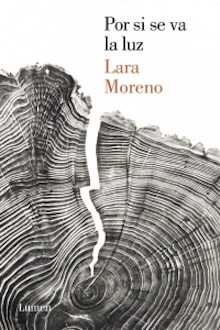 The neoruralism in In Case We Lose Power is really about an escape, a return to something or someplace we’ve never actually been, but a return nonetheless. There’s both hope and nostalgia to be found there. It’s like, one eye on the future, and another on the past. In that novel, allusions are made to disasters both climatic and economic. The fact that the Spanish economy underwent such collapse in the years prior to the emergence of this trend, and that writers like Lara are part of a generation of young people that saw youth unemployment at over 50 percent, people being forced from their homes, squatters taking over and occupying buildings—real economic devastation and instability in a country that was finally beginning to feel like it had caught up—absolutely plays into this imagining of how we could sustain ourselves outside of the neoliberal system. The neoliberal framework for development is obviously (right? Or I guess this is still a question for some people?) linked to environmental degradation and exploitation of natural resources and the resulting climate change (again, still a question???) so in short, yes, I believe there is overlap in how writers approach these questions.
The neoruralism in In Case We Lose Power is really about an escape, a return to something or someplace we’ve never actually been, but a return nonetheless. There’s both hope and nostalgia to be found there. It’s like, one eye on the future, and another on the past. In that novel, allusions are made to disasters both climatic and economic. The fact that the Spanish economy underwent such collapse in the years prior to the emergence of this trend, and that writers like Lara are part of a generation of young people that saw youth unemployment at over 50 percent, people being forced from their homes, squatters taking over and occupying buildings—real economic devastation and instability in a country that was finally beginning to feel like it had caught up—absolutely plays into this imagining of how we could sustain ourselves outside of the neoliberal system. The neoliberal framework for development is obviously (right? Or I guess this is still a question for some people?) linked to environmental degradation and exploitation of natural resources and the resulting climate change (again, still a question???) so in short, yes, I believe there is overlap in how writers approach these questions.
CWP: Has living in Spain helped you connect with more writers?
KW: Absolutely. And it has been great for getting the chance to meet the writers I’m working on in person, spend a little time with them and get to know them. The first weekend after we arrived in September, I met Lara Moreno and Aroa Moreno Durán in a tiny Aragonese village to hear Lara speak about ruralism, actually. She kind of randomly threw it out to me, to see if I wanted to come, and I think was a little surprised when I actually showed up in the town hall (late). After the talk the three of us went for lunch in another small village in the middle of nowhere and talked for hours over roasted of leg of lamb (which still makes me laugh a little)—about books, about our lives, their work. I know your question is about another type of “connecting” in the professional sense—and I’ll talk about that, too—but honestly being able to connect in a personal way with some of these authors has been important for me. As an emerging translator trying to break in, every project you choose to work on is a “passion project,” or so far it’s been that way for me. Why? Because it takes an enormous investment of time and energy to read books and produce samples, write reports, figure out where to pitch them, waiting and hoping that an editor somewhere is going to see what you see in the book. I mean, eventually the hope is that projects come to you, that you’re sought out, or develop a relationship with a press, but right now, in the beginning, it’s kind of a labor of love. And in that sense, a connection with not only the work but also the writer, personally, has added a dimension to the projects I’m attempting to advance. In a more strictly professional or networking sense, being here absolutely helps, too. I can go to festivals, conferences, readings, etc. and meet authors in person, be introduced to new works, stay up to date on the cultural and review pages of the Spanish papers (although of course you can do this from anywhere now).
CWP: Which other authors are you interested in translating? What samples do you have available, if say, a publisher wanted to check out more of your work?
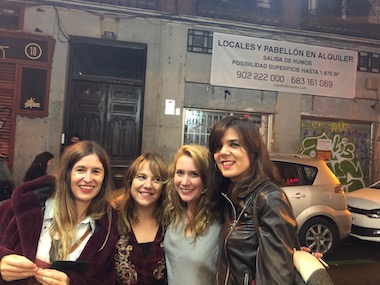
Nuria Labari, Aroa Moreno Durán, Katie Whittemore, and Lara Moreno
KW: Ha, what a dream. As you know, I’ve done quite a few of Mesa’s stories from Mala letra, and I would like to do Un incendio invisible/An Invisible Fire, as well. I’m also working closely with Lara Moreno and have completed samples of her two novels, In Case We Lose Power and Wolfskin, as well as several of her short stories (two of which are forthcoming in the Arkansas International and Gulf Coast). The same for Aroa Moreno Durán: I’ve done a sample of The Communist’s Daughter, in addition to “Gravity.” I think The Communist’s Daughter could really find a readership in English. Spanning the years 1956-1992, it’s the story of the daughter of Spanish communists exiled in East Germany after Spanish Civil War: her life as a child post-WWII, when Berlin is divided in two and the wall built; when she flees Berlin for West Germany, abandoning her life and family for the man she’s fallen in love with, from the other side; and then the life that she lives in the West, her marriage, motherhood, her regret and bitterness, the fall of the wall, the truth about her family and the consequences of her betrayal. I’m also very interested in working on Pilar Adón’s The Mayflies and anxiously awaiting Nuria Labari’s new novel. I’ve translated some of Soledad Puértola’s stories, and I’d like to work on her 1989 novel Queda la noche, which won that year’s Premio Planeta and has been translated quite a few other languages but not English. Puértolas is an important writer in Spain and holds a permanent seat on the Royal Academy—the official language institution— and is just the fifth woman to do so. I would like to promote her work in English.
Though I’m pretty much choosing to work exclusively on women writers at the moment, I am also working on novels by Pablo Gutiérrez, who was one of Granta’s Best of Young Spanish-language Novelists in 2010 and whose work is social and political and very much “of the moment”—he writes in sharp, critical, sometimes funny ways about issues of culture and economy and politics that I find really compelling. Like Mesa, there’s a real concern with the marginal and marginalized—places, people—that I’m continually drawn to. I have a full sample of his second novel Nada es crucial (Lengua de Trapo 2010)— another Ojo Crítico winner!—and I plan to work up a sample of at one or two more this winter.
CWP: What has been the most intimidating aspect of getting your start as a literary translator? What’s been the most helpful? Any advice for others out there looking to break into the field?
KW: This might sound silly and I don’t even want to reveal it, but what I find most intimidating is the success of others! I think it’s easy, when you’re starting anything new, but especially something which is creative, to compare yourself to others—what they’ve achieved, and when, and how—and worry that it won’t happen for you. That can be demoralizing and paralyzing, especially because it’s not like it’s big business, literary translation. Is there theoretically room for new translators, new authors? Of course, but it’s hard. I’ve been very lucky as an emerging translator and now need to focus on keeping up momentum and trying to read as much as possible and really get a sense of what I like, who is good, who is up and coming, etc. There’s a pressure there.
In terms of advice, I think it helped to inform myself early on about the logistics of the business—permissions, rights, agents, foreign presses, etc. That piece can be overwhelming if you don’t have experience in publishing. I am very active about reaching out to the agents and publishers of writers I’m interested in working on to see the status of rights as well as just sort of getting my name out there. Things have come from this, so I would advise other young or emerging translators to do that, if they aren’t. Another piece of advice that we heard a lot at Bread Loaf is to work on submitting stories early on, to start to build up a body of published translations, which can help “legitimize” you (I guess that’s the word) you when you start to pitch book-length projects, and again, gets your name out there and associated with an author. I’m really excited to have translations of two stories coming out this spring: “Screech Owl” by Sara Mesa will be in Two Lines, and Lara Moreno’s “Save Yourselves” in the Arkansas International, so that advice rings true for me.

This is a wonderful conversation. The challenge to translators continues to be to do what we do in the face of incredible odds of achieving material or even professional success. As with anything, the key is to read, read, read and to translate works that you know are important. I bring women’s voices from the Hispanic world into English because I believe in them and it helps me inhabit more fully my own fictional universes as a writer. The most important thing of all: believe in yourself.
[…] Already have two more interviews in the works and some other surprises, but as a bridge between the interview with Katie Whittemore and the publication of her excerpt from Sara Mesa’s Four by Four (coming Thursday!), I […]
[…] is an excerpt from Four by Four by Sara Mesa, translated by Katie Whittemore. To give you a bit of context, I’m including the synopsis that Katie sent us with her […]
What an enlightening interview with Katie Whittemore! It’s inspiring to hear about her journey into literary translation and her passion for contemporary Spanish literature. Her insights into Sara Mesa’s works and the broader trends in Spanish literature, such as neoruralism and eco-fiction, are particularly fascinating. I’m eagerly looking forward to reading her translations, especially “Four by Four” and “Cara de Pan.” It’s also encouraging to see how her personal connections with authors and dedication to promoting women’s voices in literature are shaping her career. Thank you for sharing this, Chad W. Post!